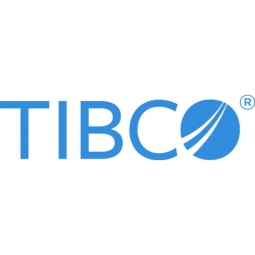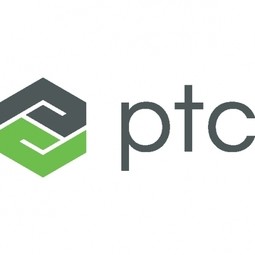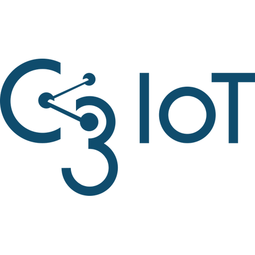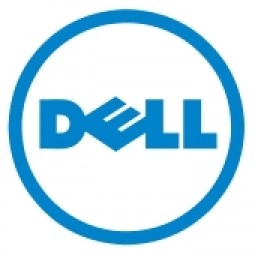TIBCO Software

概述
|
总部
美国
|
成立年份
1997
|
公司类型
私营公司
|
收入
$1-10b
|
|
员工人数
1,001 - 10,000
|
网站
|
公司介绍
TIBCO Software Inc. 释放了实时数据的潜力,可以做出更快、更明智的决策。我们的互联智能平台无缝连接任何应用程序或数据源;智能地统一数据以获得更好的访问、信任和控制;并自信地实时、大规模地预测结果。在www.tibco.com上了解 TIBCO 如何为客户最关键的业务挑战提供解决方案。
物联网解决方案
物联网应用简介
技术栈
TIBCO Software的技术栈描绘了TIBCO Software在平台即服务 (paas), 应用基础设施与中间件, 和 分析与建模等物联网技术方面的实践。
-
设备层
-
边缘层
-
云层
-
应用层
-
配套技术
技术能力:
无
弱
中等
强

Supplier missing?
Start adding your own!
Register with your work email and create a new supplier profile for your business.
实例探究.

Case Study
CTI Solutions Group Enhances Product Lifecycle Management Suite with Jaspersoft
CTI Solutions Group was facing a significant challenge in managing their reporting solution for customers. The company's clients were increasingly involved in monitoring various aspects of their businesses, including wholesale inventory, sales by style, and SKUs. CTI Solutions offered analytics via Excel and other tools in both HTML and downloadable formats. However, the company was struggling to keep up with programming and maintenance, despite having a team of 12 local full-time programmers and another 30 offshore. Six of these programmers were dedicated to maintaining task reporting for 93 countries throughout the world. The company realized that they needed a more automated, more uniform solution that could present information in a variety of ways, both online and downloadable. If they didn't move to a more agile reporting and data handling system, they would not be able to satisfy their clients' growing needs for timely information or hire the talent they needed to grow.

Case Study
Bigmate's IoT Asset Management Revolution with Embedded BI
Bigmate, a company that primarily deals with the Internet of Things (IoT) or more specifically, the Internet of Assets (IoA), faced a significant challenge. The company's telematics platform provides real-time vehicle tracking, data analysis, and tools that scale vertically or horizontally. However, new and emerging telematics applications, such as vehicle engine monitoring, were driving the need for customer accessible dashboards and reporting. With data generated as frequently as once a second, delivering visualizations that bring clarity was a crucial requirement. The main objective was to find a product that would enable them to solve their customers' problems effectively.

Case Study
Biota Technology's Innovative Use of Data Integration for Energy Sustainability
Biota Technology, a leader in industrial genomics, identified a unique business opportunity to apply DNA sequencing and genomics, typically used in medical and scientific fields, to industrial use, specifically for subsurface exploration in oil and gas. The company recognized the potential benefits of their innovations for energy companies under pressure to improve capital efficiency and reduce operating costs. However, the complexity of genomes and biological material made Biota's vision challenging to implement and scale. The company needed to characterize fluid movement in oilfields by surveying subsurface microbes at different locations, depths, and times, and organizing them into DNA markers. Each Biota sample contained around 20,000 sequences describing around 100 DNA markers, resulting in hundreds of thousands of microbial data points that needed to be stored, categorized, and analyzed for informed business decisions.

Case Study
High Tech Company Enhances Marketing Strategy with Predictive Analytics
A large tech company was using legacy analytics platforms to support over 500 internal clients with predictive modeling projects. These projects were aimed at improving customer acquisition and retention, identifying up-sell and cross-sell opportunities, increasing revenue, and understanding customer lifetime value. However, the legacy systems were primarily used for data extraction, processing, analysis, and reporting, and had several limitations. The global analytics team was heavily dependent on these systems, and the idea of migrating to a new platform, the TIBCO® Data Science platform, was met with reservations. The team decided to conduct a feasibility analysis by creating a customer lifetime value model for one of the business units, a project they had undertaken multiple times before.

Case Study
Streamlining Regulatory Compliance with TIBCO Cloud API Management: A Compliance.ai Case Study
The management of regulatory changes is a significant challenge for financial companies. The process is often costly, time-consuming, error-prone, and unpredictable. The volume of regulatory information published by state and federal governments is overwhelming, and financial companies are forced to invest heavily in manpower to keep up. Compliance.ai offers solutions to these inefficiencies, helping financial services companies manage and respond to the growing volume and pace of regulatory change. Their platform includes purpose-built machine learning models and an API for programmatic access to regulatory information. However, the challenge was managing access to the API and its offerings.
Case Study
University of Iowa Hospitals and Clinics Transforms the O.R.
In the United States, roughly one in 20 patients admitted to a hospital develops an infection, with surgical site infections being the most common. These infections account for more than 30 percent of occurrences, leading to illness, prolonged hospitalization, and even death. The total cost of hospital-acquired infections is estimated at $10 billion per year. Surgeons at the University of Iowa Hospitals and Clinics wanted to know when patients were susceptible to surgical infections to make critical treatment decisions in the operating room. Dr. John Cromwell believed that predictive analytics could prevent a high percentage of surgical site infections and decrease healthcare costs. However, the division’s desktop analytics environment could not handle large distributed data volumes, posing a major roadblock.
Case Study
TIBCO Spotfire® Analytics Software Helps to Identify and Develop Chemical Compounds In Academic Screening Facility
While the introduction of high-throughput techniques and lab automation helped to save a lot of time and manual effort to screen compounds, organizations lacked an easy to handle tool to perform accurate analyses that didn’t require a highly skilled analyst. Moreover, to cope with the tremendous amount of data, the scientists used to evaluate results on a per batch basis, skipping over information from the entire dataset thus missing opportunities to make better decisions. A large volume of complex data has to be assessed throughout the workflow to achieve the goal of delivering high-quality compounds. When the assay is developed and optimized it’s not only the activity or inactivity of a given target that has to be considered, batch size, reagent preparation, temperature, and signal stability need to be evaluated for a robust assay. Moreover, the quality of the screening campaign needs to be supervised to eradicate systematic errors, and hits have to be carefully selected to minimize false positives and false negatives in order to concentrate on the most promising candidates and make the most out of the available resources. Many data evaluation applications have difficulty dealing with the sheer volume of data, let alone handling the data’s multivariate and multiparametric nature.
Case Study
Quinte Uses Benchmark Analytics to Reduce Costs and Improve Business Outcomes
The result of these funding trends was that QHC no longer received a predictable amount of money from the government. Sixty percent of its funding is now based on demographics, referral patterns, and outcomes. While this is a positive step towards improving patient care, it requires the organization to identify opportunities that align with this new model. Initial estimates called for the company to find $10 million in savings from its $160 million budget. To meet these needs, QHC used TIBCO to build a data warehouse and deliver analytics via a user-friendly portal. More than 300 people throughout the organization, from nurses to executives, rely on this tool to measure fundamental processes and analyze critical patient data trends. TIBCO technology has helped the company measurably improve operations, meet financial requirements, and increase favorable outcomes in patient care.
Case Study
Air France-KLM Flies High with TIBCO Integration
The airline industry has evolved significantly, shifting from traditional sales agents and ticket offices to online and mobile platforms. Air France and KLM, after merging, faced the challenge of integrating multiple reservation systems, legacy systems, and commercial off-the-shelf systems. They needed an integration platform to connect these diverse systems, ensuring seamless service to passengers 24/7. The integration had to be fast, cost-effective, and future-proof to support new functionalities and personalized services.
Case Study
CargoSmart Delivers Solutions for Improved Decision-making and Cost
The shipping industry is facing increased competition, shifting alliances, and growing customer demands for better insights and faster decision-making. Carriers are struggling to keep up with backend technology advancements and are unable to leverage big data analytics effectively. This results in higher operational costs, such as terminal handling fees and bunker costs, which hinder customer satisfaction. CargoSmart aimed to provide ocean carriers with advanced analytics for better visibility and real-time decision-making to address these challenges.
Case Study
Con-way Drives to Real-time Optimization with TIBCO Fast Data
The primary goal of Con-way’s integration strategy was to provide the core business with real-time analytics and automated decision-making. The risk in their business was not having real-time visibility, which could lead to inefficiencies such as running empty trucks, resulting in no revenue but only cost. They needed to optimize drivers, trailers, routes, and miles traveled continuously as conditions changed. Additionally, during major weather events, they needed to ensure critical shipments were delivered and have real-time information on truck locations and available routes. Business continuity and real-time information were critical for their operations.
Case Study
Essent Supplies Self-service for Customer & Employee Satisfaction
Over the last decade, the energy market in the Netherlands has undergone significant changes. Consumers gained the right to switch suppliers, the government unbundled retail from power generation functions, and Essent was acquired by RWE. Additionally, Essent expanded its services to the broader European market. The company faced the challenge of adapting quickly to customer needs to stay competitive. Legacy systems and the inability to adapt were major inhibitors. Essent needed fast performance and decoupled systems for optimal flexibility to meet these evolving demands.
Case Study
ING Bank Turkey Increases Sales, Customers, and Market Share with TIBCO
ING Bank Turkey aimed to enhance customer service and market share by making banking accessible through mobile devices, the Internet, or branches. The bank faced challenges such as lack of transparency in service levels, inefficient processes, and user-unfriendly systems for both customers and employees. They needed to streamline processes, decentralize operations, and increase service and sales while differentiating their distribution with new third-party channels.
Case Study
TIBCO Moves Lufthansa Cargo from a Legacy System to a Flexible Future
Lufthansa Cargo’s IT systems had evolved into a complex and heterogeneous structure centered around the host-based MOSAIK application, which dated back to the seventies. This system enabled access to product information, bookings, reservations, and shipment tracking, as well as the exchange of waybill data via electronic data interchange (EDI). However, developing add-ons and adaptations to this system was time-consuming and costly, which was necessary for the optimal support of Lufthansa Cargo’s time-definite services. These services responded to customers’ needs for the rapid shipment of specific types of goods within a precisely defined time frame. The company needed to reduce operating costs by simplifying the complexity of interfaces and maintenance, and to accelerate the time to market of its new products and services. Enterprise and business application integration were identified as key facilitators, connectors, and control systems to achieve these objectives.
Case Study
Royal Caribbean Speeds IT Delivery and Reduces Costs with TIBCO’s Integration Platform
Royal Caribbean strives to anticipate guest needs and optimize their experience throughout pre-cruise, cruise, and post-cruise interactions. To accomplish this faster, better, and at lower cost, the IT team realized it needed a higher level integration and a services-oriented architecture that would let them transform legacy applications into reusable and re-combinable software services. The company needed a cohesive enterprise (ship and shore) integration services foundation and governance to manage the service lifecycle and sharing across the organization.
Case Study
Scandinavian Airline Service Flies High with TIBCO
As Katarina Khan, head of enterprise architecture, explains, “Over the last 20 years, the airline industry has evolved from a system of long-established, state-owned carriers to a dynamic free-market industry. There are a lot of low-cost airlines now, and for passengers, it’s become very much about a digital experience—self-service apps for booking, re-booking, and flight updates. “Back in 2001, our challenge was to move away from old point-to-point integrations and become more loosely coupled—to reuse integrations and have a very reliable, secure, high-performing infrastructure. We wanted to give the business a shorter time to market and make it easy to integrate with partners and communicate with our customers in a modern way. If we didn’t modernize, it would have been very difficult to deploy new solutions to meet customer demand.”
Case Study
Societe Generale Uses Integration to Reduce Costs, Improve Decision-Making
Over the years, Societe Generale’s Risk, HR, Accounting, Procurement, and other business units (BUs) had each built their own information systems to meet business needs. These systems had evolved into separate silos of technologies with no plan for reuse. The results included high development and maintenance costs and data discrepancies that ultimately impacted the ability to make informed decisions. To overcome these issues and industrialize integration between business units, Societe Generale’s IT management decided to implement a platform to manage and govern data exchanges: the Système d’Echange Groupe (SEG), or Group Exchange System.
Case Study
Swisscom Integrates to Compete and Transform
Swisscom faced significant challenges due to intense competition from local Telco operators and over-the-top providers that use local network resources. Additionally, the company was undergoing a rapid transformation to digital business, which necessitated an organizational restructuring and IT platform consolidation. The primary challenge was not only integrating technologies and IT platforms but also integrating people from different divisions to create solutions for the entire company. Without successful integration, Swisscom risked slower product creation, increased costs, and reduced revenues.
Case Study
T-Mobile Rings Up Faster Performance and Innovation with TIBCO
The rapid pace of change in the telecom industry presents a major challenge to the wireless providers. Consumers are constantly demanding changes like new rate plans, value-added services, better connectivity, and popular mobile applications. Throughout the industry, companies fight to keep up with the expectations of customers. As applications on mobile devices become richer and begin to generate more data, T-Mobile strives to be at the forefront of change. Consumers expect to see updated data in their apps the moment they open the phones, which necessitates automatic updating of data and faster transmission speeds. The sheer volume of traffic that smart phones and mobile apps generate is going up exponentially. By adopting the right technologies, T-Mobile wants to provide exemplary service and connectivity to its customers.
Case Study
Western Union Enables an Omni-channel Experience with Fast Data
At Western Union, customers are central to everything. The company aims to make financial transactions as fast and secure as possible, with no margin for error. Customers are increasingly embracing new technologies, especially in regions like Indonesia, India, and Africa, where adoption is faster than in some developed countries. This shift brings new requirements, such as the need to complete transactions on mobile devices. Western Union faced challenges in integrating its payments ecosystem with hundreds of banks, half a million locations, and various post offices, ATM networks, mobile devices, and online and retail locations.
Case Study
BMO Financial Group Invests in TIBCO to Deliver Exceptional Customer Experience
BMO Financial Group faced the challenge of meeting customer expectations in real-time across various channels, including branches, call centers, and digital platforms. With the rise of digital marketing and social media, customers expected personalized and timely interactions. The bank needed to simplify and automate processes, provide real-time information, and create data visualizations to make efficient decisions on how best to serve customers.
Case Study
Marks and Spencer Empowers Business Analysts with Spotfire
Retail giant Marks and Spencer wanted to empower its business analysts to learn more about the business and use that knowledge for better decision-making. They aimed to improve the productivity of the organization, particularly focusing on IT. This included optimizing the number of people working on projects and improving the speed at which solutions could be delivered. M&S started looking for a solution that would supply self-service data access and empower employees to confidently use data to answer key business questions without IT support.
Case Study
BroadReach Healthcare Remedies Medical Data in Africa
BroadReach faced a significant challenge in improving healthcare outcomes due to the fragmented nature of data across various clinics, hospitals, and NGOs. The delay in data reporting, especially for late-stage HIV and TB patients, was critical as it could take weeks to get a report, leading to severe health consequences. The primary challenge was to integrate and understand data from multiple sources quickly and effectively to make informed decisions that could save lives.
Case Study
NXP Semiconductors Controls Margins with Spotfire Analytics
In the semiconductor industry, constant margin improvement is a common challenge, and no different for NXP Semiconductors. They have a complex sales model involving direct sales to customers and through distributor channels. Managing distributor incentives and ensuring no margin leakage across different regions was a significant challenge. The traditional, static BI environment was slow and highly dependent on IT, making it difficult to add new data columns or graphs to reports. Analysts spent more time pulling data from various sources rather than analyzing it, leading to delays in identifying and acting on outliers.
Case Study
How SumAll.org Puts Analytics in Good Hands
Though nonprofits want data, they don’t always have the ability to get it. “When we start a project to help a nonprofit, we sometimes see a data collection issue, and not collecting data can have implications on funding. Funders are the biggest group demanding data from non-governmental organizations (NGOs), nonprofits, and even government,” says Heeke. At the same time, funders aren’t always keen on the idea of their donations going towards analytics tools. “There’s a huge opportunity to use enterprise-level tools for social impact and finding ways to make this technology accessible to the non-profit community is critical.” “It’s really about the quality of data and the ability to make the data visible and useful to a wide audience. People forget that good ideas come from people on the ground, and not necessarily from the analyst in an office,” says Heeke.
Case Study
digitalSTROM Takes Fast Data from the Cloud to the Home
digitalSTROM aimed to create an infrastructure for smart homes that integrates cloud-based services like weather and security. The platform needed to handle high performance and low latency, be open and secure, and integrate various technologies from multiple partners. It also had to prioritize events from IoT devices, ensuring fast responses for critical alerts like fire alarms while managing less urgent events efficiently.
Case Study
Cargill Masters the Energy Supply Chain with TIBCO Spotfire and ZEMA
Like many companies in the energy industry, the challenge for Cargill was the volume of its diverse data and the difficulty of processing it quickly to enable fast response to market events. Without a strategic partnership, Cargill would have had to develop these solutions internally, which would not be ideal. The company needed a way to manage and analyze large volumes of data efficiently to make timely and informed decisions.
Case Study
XL Axiata Calls on Fast Data to Disrupt Telco Markets
In 2007, XL committed to becoming a leader in a challenging market, one with 98 percent prepaid subscriptions and a state-owned telco that held over 50 percent market share. One challenge was that functional IT systems were in discrete silos, which did not allow the company to respond and support the business effectively. XL required a platform that would provide reliability, scalability, and allow for agile delivery of functionality. Additionally, XL's marketing challenge was to predict customer desires to optimize sales and marketing, understand customer needs, and identify opportunities to provide value.
Case Study
ZE Enhances Corporate Footprint with TIBCO Spotfire
ZE clients were looking for self-service BI, and ZE needed to decide whether to build or partner for this solution. Building in-house would require more developers, a longer time to market, and a shift in focus. ZE's clients demanded fast data availability and scalability in terms of software, architecture, technology, support, pricing, capability, and growth. ZE aimed to empower clients with the best total solution to maintain and grow its market share.
Case Study
QSuper Retools for a More Competitive Market with TIBCO
As QSuper transitions to providing superannuation management for a broader range of customers, the demands of a more competitive market suggested the need for change. The company aimed to improve operational efficiencies by streamlining back-office functions and reducing costs. QSuper faced challenges with application silos created by various business functions running separate operations and point-to-point interfaces that resulted in a brittle integration infrastructure and disjointed communications. This complexity made it difficult to deliver solutions promptly, affecting customer experience and increasing costs due to inefficiencies in communications.
Case Study
eClinicalWorks Finds the Cure for Healthcare Data in Spotfire
eClinicalWorks aimed to transition from merely capturing healthcare data to converting it into actionable insights. The solution needed to provide simple answers to complex problems, present analyses that were comprehensible and visually appealing to end users, and facilitate the extraction of data from silos. The company initially considered developing its own software but decided to integrate TIBCO Spotfire into its existing EHR application after recognizing its potential to generate new revenue from existing customers and its strong reputation in the healthcare industry.
Case Study
BNL Transfers to Digital Banking and Reduces TCO by 25%
For its new always-on, all-digital Hello bank! project, BNL aimed to improve customer acquisition by offering innovative, customer-focused banking services. The project required implementing new technology and staying updated with technological innovations. BNL faced several challenges, including transitioning from traditional, manual workflows to digital business processes, reducing costs, and moving from centralized back-office management to distributed management. They needed a robust infrastructure for application integration due to the heterogeneous applications built over the years, which lacked standardization.
Case Study
Sage Human Capital Finds Talent in TIBCO Jaspersoft
Sage’s customers wanted more visibility into the talent searches it was performing and to dramatically outperform in the recruiting market. The company aimed to increase visibility into what people were doing, what was going on in the search, and also into their recommended strategy for searches. They wanted to differentiate themselves using technology.
Case Study
Banco Sabadell Invests in Digital Banking
Banco Sabadell aimed to transition to a new digital banking model to meet the demands of more discerning digital customers. The bank faced challenges with complex legacy systems that were not integrated, leading to increased costs and longer time-to-market for new cross-system requirements. The primary goal was to simplify operations, administration, and customer relationships to deliver top-quality financial services and enhance customer satisfaction.
Case Study
Cadeon Attracts New Customers with TIBCO Spotfire
The company began to notice exponential growth in information. It wasn’t just the amount of data that was growing, but the sources, diversity, and complexity of data was also increasing. The need was no longer as simple as managing growth; companies now needed to react and manage data quality and governance. On top of all of that, they can’t lose sight of the true purpose of gathering data: to inform their business decisions. Cadeon’s customers demanded agile, innovative technologies that could help them deal with, and benefit from, the explosion in data they were experiencing.
Case Study
Ruths.ai Becomes a Trusted Oil and Gas Industry Advisor with Spotfire
Oil and gas is saturated with tools and software, presenting an opportunity for data science to connect across domains and provide unique workflows. Ruths.ai aimed to be a data science partner and trusted advisor by delivering quality solutions and good advice. They sought technologies that enabled easy deployment at enterprise scale and allowed end-users to gain trust and exercise intuition. Without the right technologies, Ruths.ai would be limited in their ability to deliver and connect with clients.
Case Study
R. Lacy Turns a Down Market into Opportunity
Recently, the oil and gas industry has experienced a sharp decline in prices, putting a strain on cash flows and project economics. R. Lacy Services saw this as an opportunity to acquire oil and gas assets at lower evaluations. However, the company faced challenges with inefficient data capture and data stored in multiple sources, which hindered their ability to make informed decisions. The goal was to provide decision-makers with 24/7 access to data to improve profitability and identify high-quality acquisition candidates.
Case Study
Blue River Solves Analysis Paralysis with Spotfire
The oil and gas industry faces significant challenges in maximizing the use of analytics tools like TIBCO Spotfire. Companies need to increase production and reduce costs while dealing with competitive pressures and commodity price fluctuations. Inefficient workflows and the use of multiple tools can hinder decision-making and lead to falling behind competitors. Standardizing on a single, powerful tool like Spotfire can help companies become more efficient and make better decisions.
Case Study
Canada’s Yellow Pages Transforms with TIBCO Master Data Management
Yellow Pages, a well-known Canadian digital media and marketing solutions company, faced the challenge of transforming its business from traditional print directories to the digital world. With consumers increasingly looking for information online, on smartphones, and on social platforms, the company needed to adapt to these new search methods. The primary challenge was to ensure that the information provided was complete, accurate, up-to-date, and rich. The company had multiple sources of merchant information, which, if published online without proper management, would lead to incomplete or duplicate listings. This would result in a loss of users, as consumers do not accept inaccurate information. The company's vision was to have efficient, systematic, and controlled curation of directory content by implementing the right governance, people, processes, and tools. The Content Accuracy & Relevance (CAR) initiative aimed to acquire, maintain, and deliver the richest, most accurate, up-to-date, and relevant content to consumers, while providing advertisers with exceptional ROI for lead generation and customer acquisition.
Case Study
Istrabenz Plini Powers Good Decision-making with Spotfire
Istrabenz Plini faced significant challenges in maintaining customer loyalty and operational efficiency due to manual reporting processes. The company relied heavily on ERP systems, spreadsheets, and custom-made legacy systems, which led to errors and inefficiencies. The inability to automate reporting and reduce errors posed a risk of losing customers who demanded high reliability and care. The need for a flexible and configurable reporting tool was critical to meet the daily or hourly demand for ad hoc analytics from various departments such as logistics, sales, production, and finance.
Case Study
Syntelli Solutions Moves the Needle with Spotfire
Over the years, Syntelli Solutions has served over 100 clients across various industries, including banking, financial services, healthcare, and sports. The primary challenge is to help clients leverage data analytics platforms to gain actionable insights. Creating dashboards is easy, but deriving insights that improve market share or profitability is difficult. The key requirements are ease of use for all types of users and enterprise-class scalability.
Case Study
Colegio Nueva Granada Uses Data to Develop Student Potential
Families have choices about where to send their students, so education, like other industries, has to demonstrate that it’s providing a value-added product. CNG seeks to be a top school in Colombia and Latin America to compete for excellent teachers in the international marketplace. The data comes from standardized testing companies as Excel files, and merging these data sources is error-prone. Additionally, the data in the student information system is manually entered by hundreds of teachers, leading to data quality issues. Without addressing these challenges, teachers would lack the information needed to develop interventions for students, and the school couldn't allocate financial resources effectively.
Case Study
AccorHotels Hosts Digital Transformation
In 2014, AccorHotels began its €225 million digital transformation. The company was struggling with a best-of-breed IT environment made up of many developments, all of which were integrated with strong dependencies. The difficulties in bringing together Oracle and Salesforce applications illustrated the limitations of point-to-point integrations. To support the development of new services and deal with the growth in transaction volumes, IT needed to address four issues: simplification of both technical architecture and service ergonomics, openness of services for easy partner integration, scalability to cope with increasing load levels, and modularity to enable a truly service-oriented architecture.
Case Study
DATABASICS Gets Back to Core Business with Jaspersoft
DATABASICS faced a significant challenge in providing flexible and powerful reporting options to its customers. Their in-house reporting engine was limited, requiring developers to code base reports that could only be updated with product releases. As the company began to include more complex data such as credit card transactions, travel data, and P-card programs, customers demanded more robust reporting capabilities. The internal teams also needed to provide training, custom reporting services, and faster responses to customer inquiries. The existing system was not scalable and lacked the flexibility to meet these growing demands.
Case Study
Dutch Railways Delivers More Reliable Train Service
Dutch Railways (NS) faced the challenge of proving their capability to deliver reliable and better services to secure the next railway concession from the Dutch government. The company had to integrate various IT systems across nine different types of trains, each with its own IT environment, making maintenance expensive and complex. They needed a unified, scalable, and reliable platform to handle the onboard and onshore systems, ensuring synchronization and no message loss. The goal was to leverage real-time data from over 800 trains to improve customer experience and operational efficiency.
Case Study
Fox Networks Group Efficiently Monetizes Content
Market dynamics have been changing rapidly, with more people finding non-traditional distribution channels and becoming 'cord cutters.' The challenge for Fox Networks Group was to figure out where these viewers are and monetize their content accordingly. To achieve this, they needed to break down data silos, including third-party data, and leverage business intelligence tools to allow their business partners to work more effectively and efficiently. They also had a diverse array of legacy applications and different types of data repositories, necessitating the selection of best-of-breed tools for each layer of their platform.
Case Study
inQuba Delivers Context for Enhanced Customer Experience
Our customer experience (CX) orchestration platform gives clients four capabilities: listening to the voice of the customer, learning what customers are saying, sharing that information internally, and engaging with the customer to close the loop. Competing on price and products will eventually run its course, making customer experience a significant strategic differentiator. The ability to relate and connect with customers is crucial. We saw a market opportunity for a single, fully integrated, end-to-end architecture providing these capabilities.
Case Study
Yakult’s New Product Sales in the Netherlands Increase 15 to 20% with Spotfire
As Yakult Market Analyst Egbert Jan Vierkant explains, in the first several years in Europe, Yakult sales grew steadily, but suddenly, after competitors began to enter the market, something surprising happened. “We had an extraordinary sales increase, especially in the Netherlands.” The company wanted to know why, but tools like Excel were not suitable. “We were suffering from time-consuming analysis, mistakes, and spreadsheets. We had multiple data sources that we could not bring together. We were spending time on gathering and collecting information instead of on thinking about the business.”
Case Study
KB Card Charges Ahead with Marketing Innovation
Since 2000, the credit card industry in South Korea has grown rapidly, with credit card charges accounting for almost 80% of family expenditures. With 22 credit card companies in the market, competition is fierce. KB Card's existing campaign system was limited, sending non-customized offers via text messages, which were often seen as spam. This damaged the company's reputation and customer satisfaction. The company needed a way to reach the right customer at the right time with personalized offers to stand out in a highly competitive market.
Case Study
Macy’s Directs Millennial Traffic with TIBCO Cloud API Management
Macy’s needed to adapt to the increasing mobile traffic and provide a seamless mobile experience. The company faced challenges with optimizing their mobile site, which was not frequently used due to slow speeds and lack of optimization. The impact of not resolving these issues would be dissatisfied customers, decreased brand identity, lower sales, and higher customer turnover.
Case Study
News Corp Australia Headlines Ad Revenue with Mashery APIs
The media industry is undergoing massive disruption, with consumers and advertisers migrating to digital channels. News Corp Australia faced challenges with their monolithic platform, which was constrained in capacity, volume, and the ability to quickly adapt to market dynamics. The platform required large monthly releases, making it difficult for the business to respond swiftly to e-market changes. Additionally, the platform was resourced by a single team, making it hard to find and retain resources.
Case Study
University of Chicago Medicine Improves Patient Care with Data
Some of the challenges that U Chicago Medicine needed to resolve were how to effectively share data across a large number of disparate systems. They had silos within technology as well as functional areas, and needed to change their culture. If they were not able to resolve these challenges, ultimately, the quality and safety of their care delivery system could be impacted.
Case Study
ACTIVE Energizes Event Participation and Revenue with APIs
ACTIVE helps organizers transform and grow their businesses. The company hosts the world’s largest directory of sports and recreational activities, facilities, venues, and classes—and collects all participant and event data so thousands of organizers can manage data and payments seamlessly and effectively. “Our goal is to help transform and grow event organizations everywhere,” says Kristin Carroll, vice president of corporate and consumer marketing. “We had an API. We just didn’t have the knowledge or resources to implement it to its full potential from development to monetization,” explains Ms. Carroll. The company was looking for ways to broadly share customer activities that would fit with its cloud infrastructure. Further, it wanted to replace ETL systems with APIs, increase IT efficiency while keeping costs below average, and implement a secure API management solution that could scale with global growth.
Case Study
Argos Delivers Its Mobile Strategy with Mashery
Argos, a leading digital retailer in the UK, faced challenges in scaling its API infrastructure to support its growing digital retail capabilities. With 1 billion annual visits to its website, Argos needed a solution to empower its APIs for scale, data security, and multichannel innovation. The company identified unexpected opportunities for API use in various channels and parts of the business, necessitating a robust solution to manage and secure these APIs across multiple platforms.
同类供应商.

Supplier
IBM
IBM is an American multinational technology and consulting corporation that manufactures and markets computer hardware, middleware, and software, and offers infrastructure, hosting, and consulting services in areas ranging from mainframe computers to nanotechnology. IBM is intent on leading the development of a global data field.

Supplier
PTC
PTC is a global provider of technology platforms and solutions that transform how companies create, operate, and service the "things" in the Internet of Things (IoT). The company's next-generation ThingWorx technology platform gives developers the tools they need to capture, analyze, and capitalize on the vast amounts of data being generated by smart, connected products and systems. The company's field-proven solutions are deployed in more than 26,000 businesses worldwide to generate a product or service advantage. PTC's award-winning CEO, considered an industry thought leader, co-authored the definitive guides to the impact of the IoT on business in the Harvard Business Review.

Supplier
C3 IoT
C3 IoT provides a full-stack IoT development platform (PaaS) that enables the rapid design, development, and deployment of even the largest-scale big data / IoT applications that leverage telemetry, elastic Cloud Computing, analytics, and Machine Learning to apply the power of predictive analytics to any business value chain. C3 IoT also provides a family of turn-key SaaS IoT applications including Predictive Maintenance, fraud detection, sensor network health, supply chain optimization, investment planning, and customer engagement. Customers can use pre-built C3 IoT applications, adapt those applications using the platform’s toolset, or build custom applications using C3 IoT’s Platform as a Service.Year founded: 2009

Supplier
Altair
Altair is a leading provider of enterprise-class engineering software enabling innovation, reduced development times, and lower costs through the entire product lifecycle from concept design to in-service operation. Our simulation-driven approach to innovation is powered by our integrated suite of software which optimizes design performance across multiple disciplines encompassing structures, motion, fluids, thermal management, electromagnetics, system modeling and embedded systems, while also providing data analytics and true-to-life visualization and rendering.




